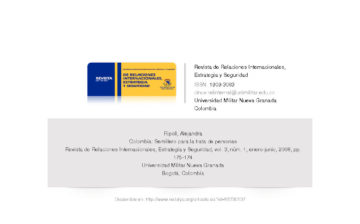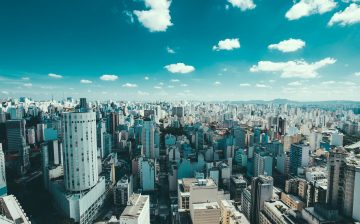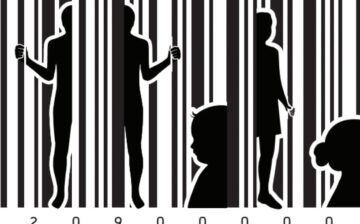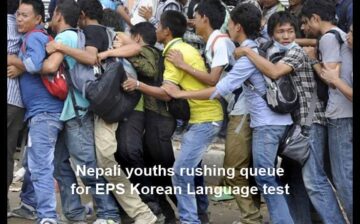Sign up for our news digest
I agree to receive email updates from Human Trafficking Search. I may unsubscribe at any time.
Labor Trafficking

It’s the Holiday Season—Are You Funding Trafficking?
The holiday season is a time of bustling shopping malls, jam-pack fashion avenues, and draining bank accounts. In the mood of giving, we buy numerous gifts, from a bag of coffee for the neighbors to a new computer for our spouse. This holiday season, Human Trafficking Search invites you to consider whether or not your purchase is helping to fund human trafficking.

Rising Numbers of Unaccompanied Children Give Concern to Protection Mechanisms
Recently the number of unaccompanied migrant children from El Salvador, Guatemala, and Honduras arriving at the U.S. Southwest Border has again begun to increase. (A total of 5,622 children, mostly from Central America, were caught at the border with Mexico, more than double the number stopped in November 2014.)

Brazil’s Dual Reaction to Forced Labor
In 1888, Brazil became the last nation in the Western Hemisphere to formally abolish slavery. Over the course of 300 years, an estimated four million Africans were brought to Brazil to work as slaves in sugar plantations and gold mines. Although no longer institutionalized, the tradition of slavery has yet to end in Brazil and still exists in the form of forced labor, debt bondage [and] degrading conditions that violate human rights or overwork that threatens life or health. The 2014 Global Freedom Index estimated that 155,300 people are currently enslaved in Brazil, most of whom are involved in agricultural or mineral production as part of a supply chain for large multinational corporations.

Using Technology to Educate on Child Labor: DOL’s New App, Sweat & Toil
Recently the United States Department released the 14th edition of its annual report, the 2014 Findings on the Worst Forms of Child Labor. The report is prepared by the Bureau of International Labor Affairs in accordance with Trade and Development Act (TDA) of 2000 and the Trafficking and Victims Protection Reauthorization Act of 2005. The report documents both the progress made in eliminating child labor globally and also the challenges remaining. The 2014 Findings on the Worst Forms of Child Labor report showed some 60 percent of the 140 countries surveyed with moderate to significant improvement on child labor issues.

Expanding Legal Options for Foreign National Trafficking Victims
Both U.S. Citizens and Foreign Nationals can be victims of human trafficking in the United States. Foreign National victims of human trafficking may sometimes be living within the United States in an undocumented immigration status. To address the particular vulnerabilities of these victims, the Trafficking and Victims Protection Act creates certain immigration protections for foreign national trafficking victims so that they remain legally within the United States.

Refugees and Trafficking: A Dangerous Nexus
The current crisis of Syrian refugees migrating to bordering states and Europe has commanded the attention of the media. From images of 3-year-old Aylan dead on the shores of Turkey to the tables of the European Commission, this issue has become global. However, seldom discussed is the stark connection between trafficking and refugees.
Pope Francis and Human Trafficking
This week, Pope Francis will be visiting the United States and touring Washington D.C., Philadelphia, and New York City. During his time here Pope Francis will be addressing Congress and the United Nations General Assembly. There has been much speculation about what the Pope will say in these remarks and during this trip. Despite the uncertainty about his exact remarks, one thing is for sure: this Pope has dedicated more attention to the discussion of human trafficking than any other Pope or world religious leader before him.

When is youth labor migration actually child trafficking?
The 2008 financial crisis and global recession affected individuals all over the world, but it may have hit global youth the hardest. Youth unemployment rose immediately, hitting 12.7 percent in 2009. When global recovery weakened in 2012 and 2013, it further aggravated the problem of youth unemployment. At the moment, it is estimated that 73 million young people are unemployed worldwide, and youth are three times more likely to be unemployed than adults. And analysts predict that the number unemployed youth will continue to rise.
Eliminating Trafficking & Forced Labor from Supply Chains: New Legislative Trends
The existence of forced labor and human trafficking in a company’s supply chain represents the newest frontier of the global effort to eliminate forced labor and human trafficking. Supply chains are systems of organizations, people, activities, information, and resources involved in moving a product or service from supplier to customer. They transform natural resources, raw materials, and components into a finished product that is delivered to the end customer.
Improving State Trafficking Laws
The Trafficking and Victims Protection Act (“TVPA”) and its subsequent reauthorizations provide the United States government with the federal framework to regulate anti-trafficking policy and trafficking victim service provisions. However, there are also state laws in place to address human trafficking. Currently all 50 states have laws criminalizing human trafficking. Yet this is a new development, because as recently as 2004, only four states had human trafficking laws. The tipping point came in 2011-2012 when 28 states passed human trafficking laws. While all states now have anti-trafficking laws, some states nominally address labor trafficking and still others prioritize sex trafficking of minors and as such need to be augmented.
